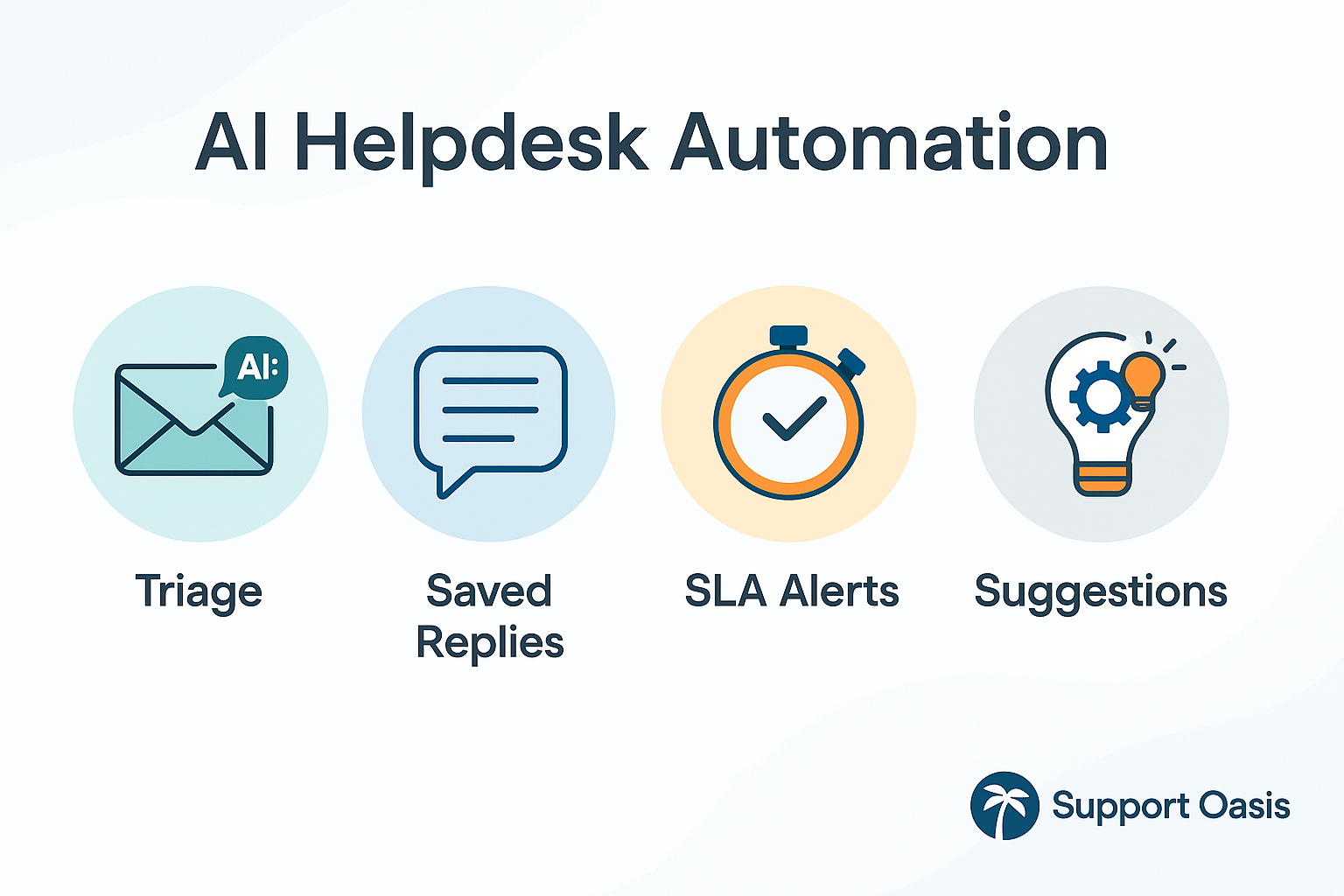AI helpdesk automation helps small teams respond faster with less busywork. As a result, agents focus on real problems, customers get timely replies, and leaders see steady improvements. In addition, automation keeps quality consistent when volume spikes.
AI Helpdesk Automation: Why It Matters
First, automation reduces manual triage, tagging, and reminders. Consequently, tickets move to the right owner with the right priority. Moreover, predictable responses build trust. Research shows that better, faster communication drives loyalty, which ties directly to revenue growth; see The Value of Customer Experience, Quantified from Harvard Business Review.
For a clean foundation that supports automation, review Email-Based Helpdesk: Simple Setup for Small Teams and the step-by-step guide How to Set Up a Helpdesk for Your Small Team in One Day.
Tasks to Automate Today
AI triage rules and routing
Use intent, keywords, or sender domain to assign owner and priority. For example, send “billing” to Finance and “cannot log in” to Support. For principles that keep routing simple, compare approaches in Shared Inbox vs Helpdesk: Which Is Better for Small Teams?. For an overview of help desk automations, see Zendesk: Automations and triggers explained.
AI knowledge base replies
Ground replies in your policies and SOPs. Therefore, agents can approve and send in one click. When answers need a human touch, personalize the first line and link to one helpful resource.
Automate SLA tracking and alerts
Set timers for first reply and resolution by priority. Then trigger reminders as deadlines approach. As a result, the team meets targets without watching the clock.
Smart acknowledgments outside business hours
Send branded “we got it” messages with a clear next update time. Consequently, customers know what to expect while your team sleeps.
Suggest saved replies and next steps
Use AI to propose a short template and one next action. In addition, attach the most relevant help article to reduce back-and-forth. For ready-to-use copy, see Helpdesk Saved Replies: 15 Templates for Small Teams.
Best Practices That Keep Quality High
- Start small and expand
Automate one workflow at a time. Therefore, you can measure impact and avoid surprises. - Keep a human in the loop
Approve AI replies for sensitive topics, billing, and VIP accounts. In addition, require citations to your docs for policy answers. - Limit links and length
Short answers land faster. Because clarity wins, include one link and one next step. - Review rules monthly
Retire weak automations, tune triggers, and refresh templates. Consequently, performance does not drift.
For broader context on choosing right-sized tools, skim Helpdesk Software Without the Bloat: Tools Built for Lean Teams.
Simple Targets and a Mini Dashboard
Set realistic goals, then raise them as you improve.
- High priority: first reply within 1 hour; resolution same day.
- Normal priority: first reply within 4 hours; resolution within 1 business day.
Track five tiles weekly: first response time, resolution time, backlog, reopen rate, and SLA attainment. Then pick one small change and review results next week. For measurement ideas, see external guidance like Zendesk help desk metrics.
Final Thoughts
With AI helpdesk automation, small teams gain speed, consistency, and control. In conclusion, route work automatically, ground replies in your docs, and use gentle alerts to protect SLAs. As a result, customers feel momentum and your team gets hours back each week.
Ready to save hours every week?
Try Support Oasis for free to launch AI routing, grounded replies, and SLA alerts in minutes. Try for free or learn more about Support Oasis.
